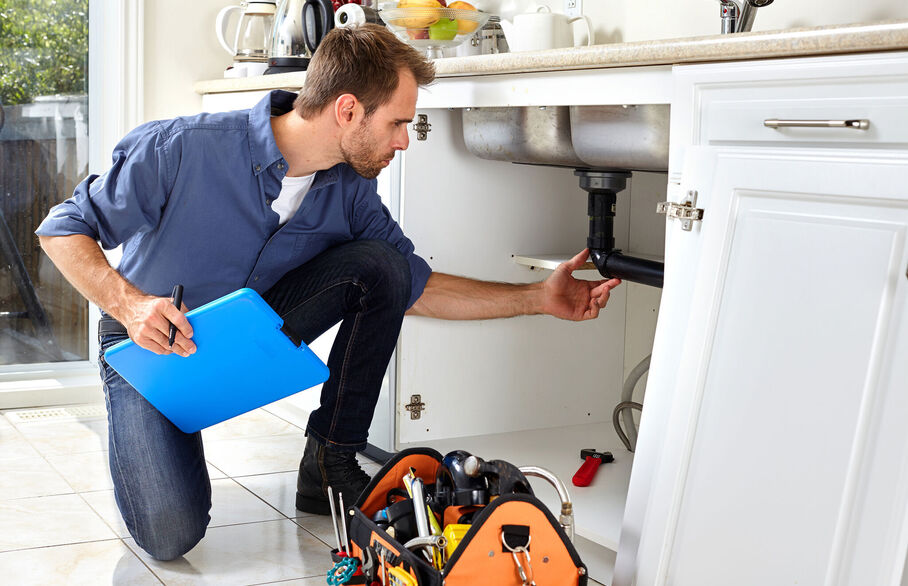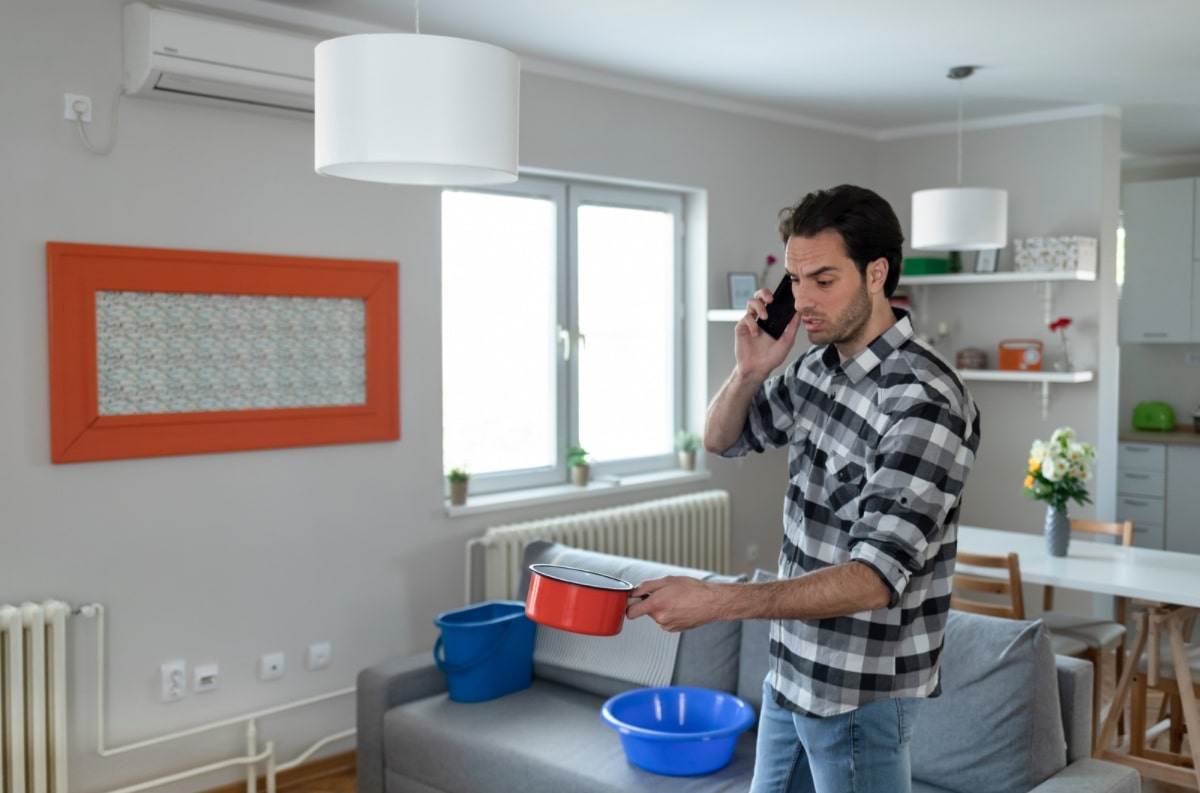Handling Plumbing Issues in Rental Properties: A Guide
Handling Plumbing Issues in Rental Properties: A Guide
Blog Article
What are your concepts about Plumbing Maintenance and Repair in your Rental Property?

Managing pipes issues in rental homes efficiently is vital for preserving renter contentment and maintaining the home's value. Whether you're a landlord or a home supervisor, knowing exactly how to resolve these common problems can save you time and money while ensuring compliance with legal responsibilities. Right here's a detailed guide on how to handle pipes problems in rental buildings.
Paper Every little thing
Keep detailed records of all reported pipes problems and the actions required to resolve them. Documents ought to consist of dates, descriptions of the issue, communication with renters, and invoices from contractors or plumbers. This details can be critical for insurance policy cases, tax deductions, and lawful security.
Use Qualified Professionals
Always make use of licensed and insured experts for considerable plumbing repair services and installments. This makes certain that the work depends on code and can assist prevent responsibility issues in case of mishaps or further damages. It additionally comforts renters that fixings are being managed expertly.
Establish Clear Interaction
Encourage tenants to report any pipes problems as quickly as they take place. Supply several communication channels such as phone, e-mail, or an occupant website to make it simple for them to reach out. Trigger actions to these records can stop small issues from escalating into significant troubles.
Educate Renters
Educate your renters about what constitutes a pipes emergency situation and what does not. Give standards on how to handle small concerns themselves, such as utilizing a bettor to unclog a bathroom. Also, educate them about what they should prevent putting down drains pipes to avoid obstructions, such as grease, coffee premises, and non-biodegradable items.
Regular Upkeep
Execute a routine upkeep routine for all plumbing systems in your leasing buildings. Normal checks can help recognize and deal with concerns like leakages, slow drains, or corroded pipelines prior to they become significant. Think about hiring a professional plumbing to check the residential or commercial properties every year or semi-annually.
Quick Reaction to Emergencies
Have a strategy in position for responding to plumbing emergencies. This should include having the contact details of dependable plumbing solutions that supply 24/7 emergency repairs. Quick action is important to decrease damage in circumstances like ruptured pipelines or extreme leakages.
Preventive Upgrades
Consider updating older plumbing systems and components to much more contemporary, effective versions. This can lower the regularity and extent of plumbing concerns and lower long-lasting maintenance expenses. It's additionally a marketing point for potential tenants that value upgrades and contemporary features.
Tenant Move-Out Inspections
Conduct extensive pipes checks throughout move-out examinations to make certain that any issues are recognized and resolved before a new lessee moves in. This avoids disputes with new occupants over pre-existing conditions and makes certain the residential or commercial property remains in leading problem.
Understand Legal Obligations
Understand your legal duties relating to pipes and general property upkeep. The majority of jurisdictions call for proprietors to ensure their homes are habitable and that all plumbing systems are in good working order. Failing to address major problems without delay can lead to lawsuits from tenants.
Lessee Reimbursements
If a plumbing issue needs prompt focus and the lessee fixes the issue by themselves, have a clear plan in position for compensating expenses. Make certain occupants understand they ought to get prior approval for higher-cost repairs unless it's an outright emergency.
Verdict
Taking care of plumbing issues in rental residential or commercial properties calls for a positive approach and excellent interaction with occupants. By staying on top of upkeep, responding promptly to emergency situations, and making use of competent experts, landlords can maintain their buildings in excellent condition and maintain excellent partnerships with lessees.
How to Handle Water Damage in a Rental Property
What is Water Damage?
Water damage is harm or destruction caused by water entering areas where it is not supposed to be. It can be caused by a variety of sources and can manifest in different ways. The most common examples of water damage include:
Leaking roof Plumbing leaks Appliance malfunctions Poor drainage Flooding Sewage backup Condensation Tenant negligence HVAC system issues Frozen pipes Is water damage dangerous?
Water damage itself is not inherently dangerous, but it can lead to various hazards and health risks if not promptly and properly addressed. The severity of these risks depends on the extent of the water damage, the source of the water, and how quickly it is mitigated.
Some potential dangers associated with water damage include structural damage, mold and bacterial growth, electrical hazards, water contamination, and pest infestations. In situations where mold and mildew have gone unaddressed, mold can start to develop within 24-48 hours of water exposure, and this can impose a serious health risk to tenants. In particular, mold spores and damp conditions can lead to respiratory issues and even make existing health problems worse, such as allergies, asthma, or immune disorders.
Water Damage in an Apartment - Who is Responsible?
If the water damage is caused by the tenant’s negligence, the tenant is responsible for the cost of repairs. If the water damage is caused by a defect in the property, the landlord is responsible for the cost of repairs. If the water damage is a result of natural causes, such as excessive rain, then the landlord is responsible, since the water intrusion likely occurred due to a defect in the property. Landlord Responsibility water damage in rental property
Since maintaining habitability is the landlord’s legal responsibility, landlords are responsible for any resulting structural damage caused by water damage. These structural damages may include damage to walls, roofs, ceilings, and flooring. If water damage has affected the rental property’s original structure, the landlord is responsible for repairing or replacing those materials. Therefore, landlords should have property insurance that covers the structural components of their rental property so that they can receive help with the costs of covered events.
Preventative measures can also help landlords avoid massive renovations. Preventative maintenance may include conducting regular inspections to identify and address potential water damage before it becomes a major and urgent problem.
If a landlord fails to meet their responsibilities regarding water damage, it can lead to legal disputes and potential liability. Tenants who believe their landlord is not addressing water damage issues in accordance with California law can seek legal advice or contact local housing authorities for assistance.
https://www.goodlifemgmt.com/blog/water-damage-in-a-rental-property/

Do you like more info about 10 Common Rental Property Repairs? Try leaving feedback down the page. We will be pleased to know your ideas about this post. Hoping that you visit us again in the future. Sharing is good. Who knows, you could be doing someone a favor. We take joy in reading our article about Plumbing Maintenance and Repair in your Rental Property.
Report this page